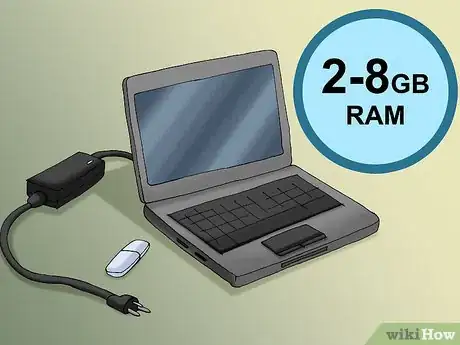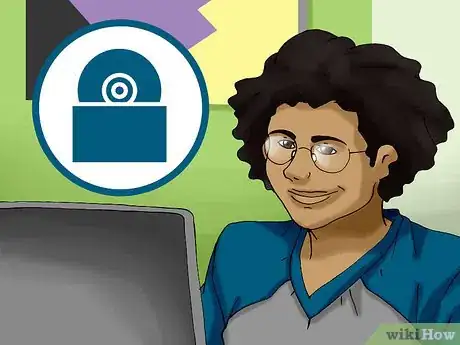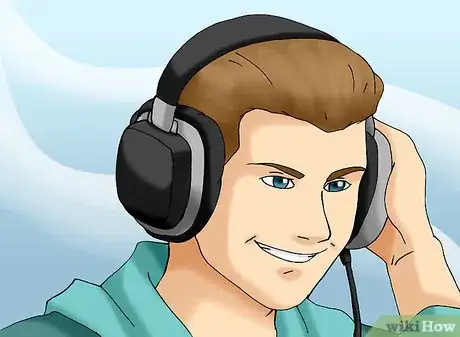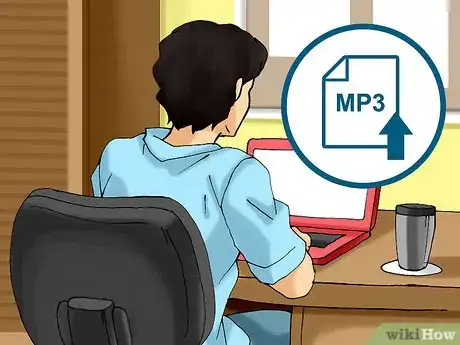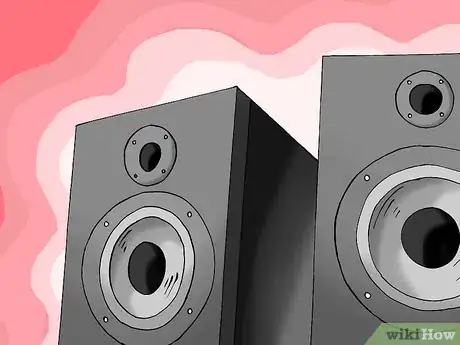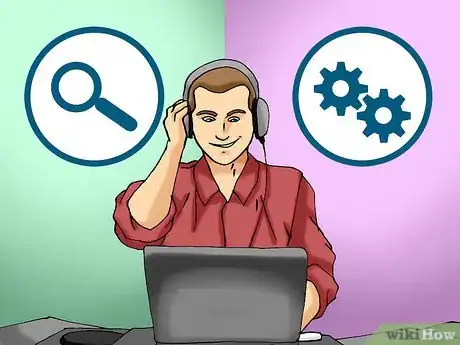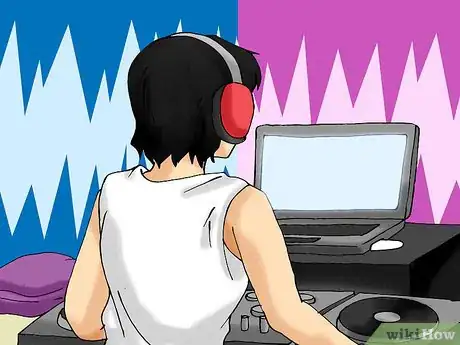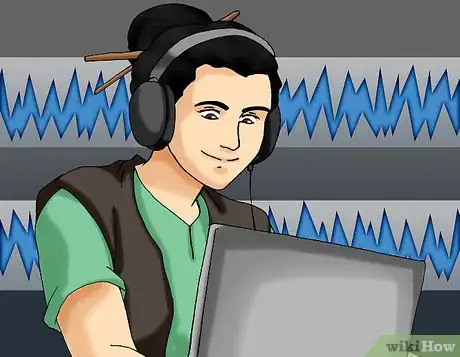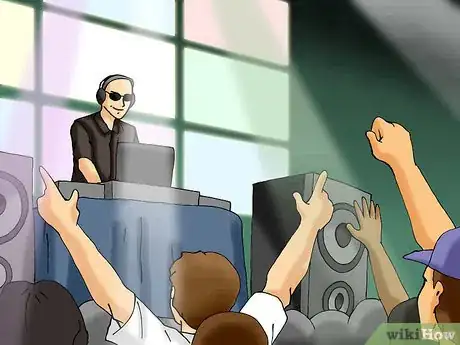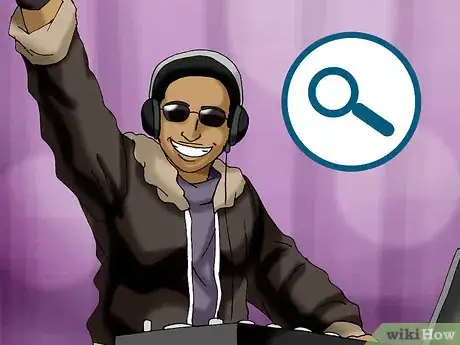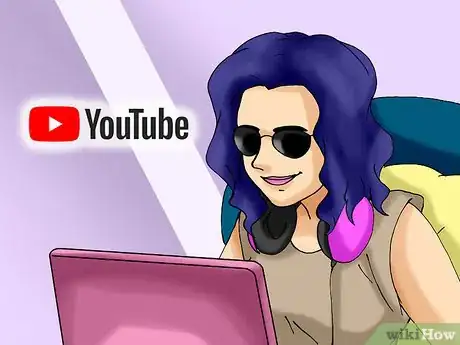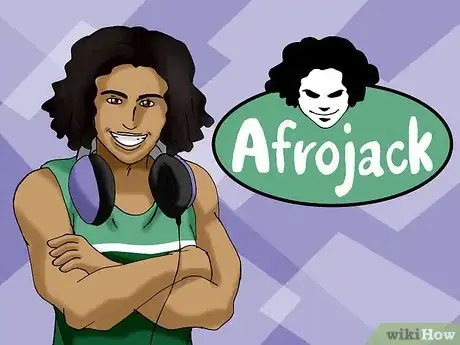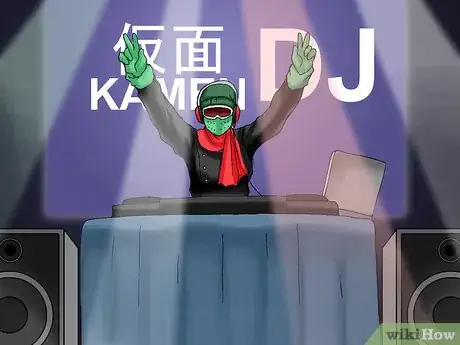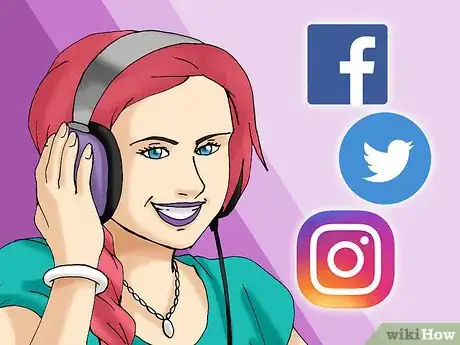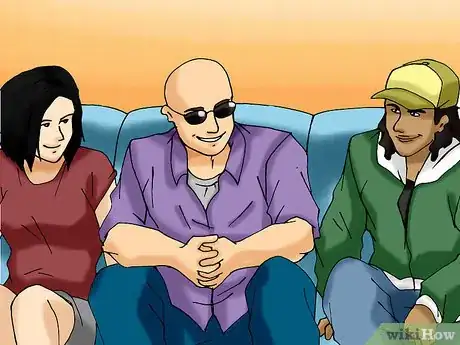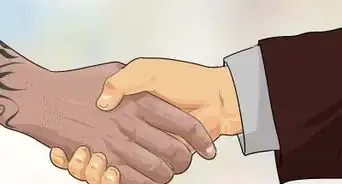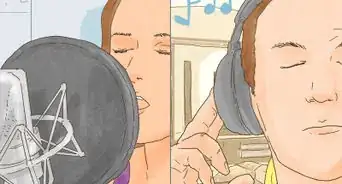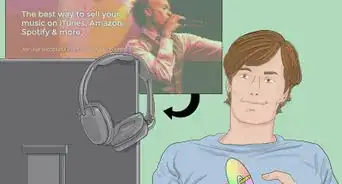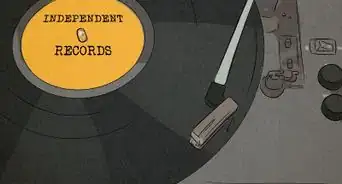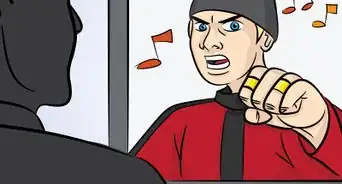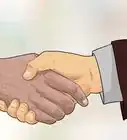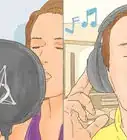This article was co-authored by Timothy Linetsky. Timothy Linetsky is a DJ, producer, and music educator that has been making music for over 15 years. He is a certified Ableton trainer and creates educational YouTube videos focused on producing electronic music. He has over 90,000 YouTube subscribers.
There are 7 references cited in this article, which can be found at the bottom of the page.
wikiHow marks an article as reader-approved once it receives enough positive feedback. In this case, 97% of readers who voted found the article helpful, earning it our reader-approved status.
This article has been viewed 22,329 times.
EDM, or electronic dance music, is a popular choice for many DJs. If you're hoping to become an EDM DJ, you'll first want to get the needed equipment, such as a laptop, DJ software, and speakers. Practice using the DJ software and play around with transitioning between songs. When you're ready to start playing for an audience, ask local venues around town if they'd like you to DJ and brainstorm ways to get the crowd excited.
Steps
Building Your DJ Setup
-
1Find a laptop to use that you can easily transport. Most laptops will be able to run DJ software, so if you already have a nice laptop of your own, you can use that one. It’s best to use one that you can bring with you to venues easily, and the laptop should have a USB port.[1]
- Though your laptop will likely be plugged in while you’re DJing, it’s a plus if your laptop has a good battery life.
- Depending on the software, you should try to have 2-8 GB of RAM.
-
2Choose DJ software to get you started. The DJ software is essential for creating mixes and experimenting as a DJ with the music. Pick out a program that suits your needs, such as Apple Logic Pro, Ableton Live, or Image Line’s FL Studio. The software can get pricey, so do some research and choose which one you’re most comfortable using.[2]
- Choose a software that works with your specific laptop, such as Windows or Mac.
- Another term for this is DAW, or digital audio workstation.
Advertisement -
3Purchase a quality pair of over-ear headphones. The headphones should be comfortable and sturdy while being able to isolate the music well. You don’t need to spend a lot of money on them—over-ear closed headphones that can be found at electronic stores or online will work well.[3]
- These will help you with cueing, so you’ll be able to hear a song through the headphones and decide when to start playing it through the speakers.
-
4Select EDM MP3 files to create a library of music. There are lots of websites you can visit that are geared specifically towards DJs and EDM music, giving you thousands of options for MP3 files. Listen to the songs before purchasing them to make sure they’re of good quality and don’t sound grainy.[4]
- Try to find artists that you love and create a collection of music based on your favorite songs of the genre.
- Websites with good music options include Club Killers, Late Night Record Pool, and iTunes.
- Some websites will also provide free EDM samples.
EXPERT TIPMany people think that mixing will make or break their track, but the key to a great mix is strong arrangement and strong sound selection.
Timothy Linetsky is a DJ, producer, and music educator that has been making music for over 15 years. He is a certified Ableton trainer and creates educational YouTube videos focused on producing electronic music. He has over 90,000 YouTube subscribers.
Timothy Linetsky
Music Producer & Instructor Timothy Linetsky
Timothy Linetsky
Music Producer & Instructor -
5Pick out monitor speakers so your music can be heard. The type and size of speakers you need will depend on the venues you’ll be playing at, but if you’re just starting to DJ, don’t invest a ton of money into the speakers. If you have a simple set of 2 speakers around the house that can plug in to your computer, these should work, and a subwoofer will complete your speaker needs.[5]
- Make sure you have cords that will connect the speakers to your laptop.
- Purchase DJ monitor speakers if you have the money or when you begin playing at larger venues.
Honing Your DJ Skills
-
1Learn to use the software by experimenting with songs. The best way for you to learn everything your DJ software can do is to just play around with it and try out different tools. If you’re a visual learner, it might help to watch online videos of others using the software, and if you learn better through reading, read articles online about the software or purchase a book on the topic.[6]
- For example, discover what Logic Pro can do by watching a YouTube video on how to begin using it and then trying out the methods yourself.
EXPERT TIPTimothy Linetsky is a DJ, producer, and music educator that has been making music for over 15 years. He is a certified Ableton trainer and creates educational YouTube videos focused on producing electronic music. He has over 90,000 YouTube subscribers.Music Producer & Instructor
 Timothy Linetsky
Timothy Linetsky
Music Producer & InstructorStruggling to start a song? DJ Underbelly, a musician and producer, tells us about his process: "Most of the time I start with a sound, and then out of that I build an idea, in Ableton what’s called a session view. I’m just trying to throw everything against the wall and see what sticks. After I've come up with one 8- or 16-bar loop and created a bunch of layers for it, I try to draft out the broad strokes of the arrangement as quickly as I can. After I have the broad strokes, it’s all about fine-tuning the details with transitions, redoing certain parts or sounds, and tightening up sections."
-
2Practice transitioning between songs. To create a smooth transition, it helps to learn to pay attention to the tempo of each song so that you can match them fluidly. As a song ends, choose a song with a similar rhythm to start playing next so you can easily fade them in and out.[7]
- Your DJ software will help you learn how to do this, but play around with different songs to listen for which ones flow nicely together.
- Learning to beatmatch will help you transition from one song to another smoothly.
-
3Use EQ to create better sound in your mixes. EQing, or equalizing, helps boost or reduce certain tones in music so that you create the sound you want. Before EQing, listen to the track and decide if there are any elements in it that you'd like to change, such as exaggerating sounds that you like, cutting out sounds you don't like, or altering a sound so it's slightly different.[8]
- When first starting to use an equalizer, make small changes, such as boosting the sound 3dB, to see how it alters the sound.
-
4Create an entire set to help you get booked. When you're creating your set of music, pay close attention to the venue and audience you'll be playing for. Pick out EDM tracks you think the audience will enjoy, and plan out your set according to the type of energy you want to create throughout the show.[9]
- For example, you might start with songs that have medium energy, working your way up to high-intensity songs and then slowly coming back down.
- Your set may need to be an hour to several hours long depending on the event and venue.
-
5Study DJs that inspire you to learn from them. Scope out EDM artists whose work you love, or go see a DJ live so that you can watch them in action. Listen carefully to the songs they choose, how they switch smoothly between songs, or how they get the crowd to maintain their excitement throughout an entire show.[10]
- You can also watch YouTube videos of EDM DJs that you like, as many of them create videos either showing them at a live show or giving bits of advice for DJing.
-
6Look at online resources for help, if necessary. YouTube is a great source for figuring out how to use DJ software, pick great songs for the crowd, or put together unique mixes. The videos will give you a great visual and you can follow along using your own software and music.
- There are also lots of blogs, articles, and forums online that will help you find the answer to any problem you’re having.[11]
Expanding Your Following
-
1Brand yourself by choosing a unique DJ name. Choosing your DJ name gives you a unique opportunity to craft your DJ identity from scratch, selecting a name that exemplifies your music. You can use your own name, a nickname for yourself, or come up with a completely new name that you think sounds cool. Try to pick a simple, catchy name that people will remember.[12]
- For example, Avicii, Skrillex, and Afrojack all chose unique names that sound interesting.
- Make sure the name you choose is easily pronounceable, and do a quick online search to make sure it’s not already taken.
-
2Make yourself stand out from other DJs. Some DJs have a certain costume that they wear during every show, while others have special lighting or fun props. When the crowd sees these things, they know which DJ is performing and get more excited. Try to pick your own signature outfit, prop, or activity to engage the crowd.[13]
- For example, you could choose to give everyone in the crowd glow sticks or have bubble machines creating bubbles the entire time.
- You could have a light-up jacket that represents you as a DJ.
-
3Market yourself on social media. Create events on Facebook and invite people to them to help spread the word that you’re going to have a show. You can also post pictures on Instagram to get people excited about your DJing or tweet what you’re working on for the next show on Twitter. By having a strong social media presence and getting into the EDM community, you’ll attract more fans and will be easier to get in touch with.[14]
- If you make unique mixes or sets, you can use Soundcloud to post them for others to listen.
-
4Reach out to venues around town to see if they’ll let you play. Email, call, or visit local nightclubs in your area to see if they’re interested in having you perform your EDM tracks. You can also reach out to friends to see if they want a DJ at their next party, or you can see when local carnivals or festivals will be happening and contact them about performing too.[15]
- Make sure you specify that you'll be playing EDM music when booking venues or events.
- Creating a CD of one of your setlists to give to the nightclub or festival coordinator is a good way to show them what kind of music you’d be playing.
- Be prepared to play your first few shows for free if you don’t have a lot of experience yet.
-
5Network with people at shows and venues. The people that put on EDM shows, as well as the people that attend them, will have great connections and ideas for how you can find other DJ opportunities. Talk with the people you meet as at shows to get to know them—you never know when a connection might be useful.[16]
- If you’re not performing yet, it’s still super useful to attend EDM concerts to see if you can meet anyone who knows where to find good EDM music or who knows how to use the software well.
- Strike up a simple conversation with someone, asking them when they first started getting into EDM music, who their favorite artists are, or if they’ve ever DJed before.
References
- ↑ https://www.youtube.com/watch?v=UpHqUkbZg-0
- ↑ https://www.youtube.com/watch?v=UpHqUkbZg-0
- ↑ https://blog.udemy.com/dj-equipment-for-beginners/
- ↑ https://www.youtube.com/watch?v=6GbsX5aoXrY
- ↑ https://blog.udemy.com/dj-equipment-for-beginners/
- ↑ https://www.youtube.com/watch?v=UpHqUkbZg-0
- ↑ https://www.cosmopolitan.com/career/a54900/things-i-wish-i-knew-dj-career/
- ↑ https://www.youtube.com/watch?v=I6ZF_NHvqzU#t=2m47s
- ↑ https://www.youtube.com/watch?v=6eFhWAUfES8#t=2m20s
- ↑ https://www.youtube.com/watch?v=tszbtSXWQ5o
- ↑ https://www.youtube.com/watch?v=tszbtSXWQ5o
- ↑ https://www.youtube.com/watch?v=UpHqUkbZg-0
- ↑ https://www.youtube.com/watch?v=UpHqUkbZg-0
- ↑ https://www.youtube.com/watch?v=UpHqUkbZg-0
- ↑ https://www.youtube.com/watch?v=UpHqUkbZg-0
- ↑ https://www.youtube.com/watch?v=UpHqUkbZg-0
